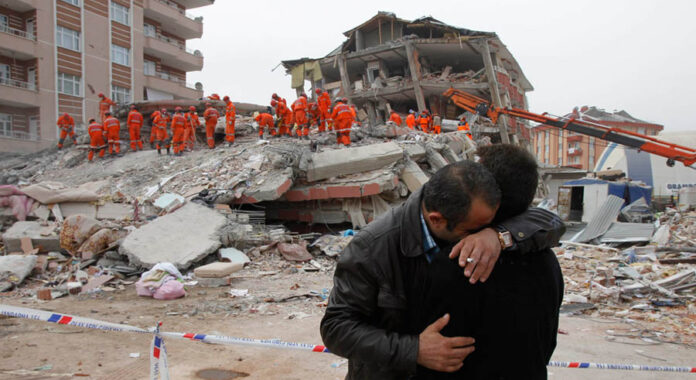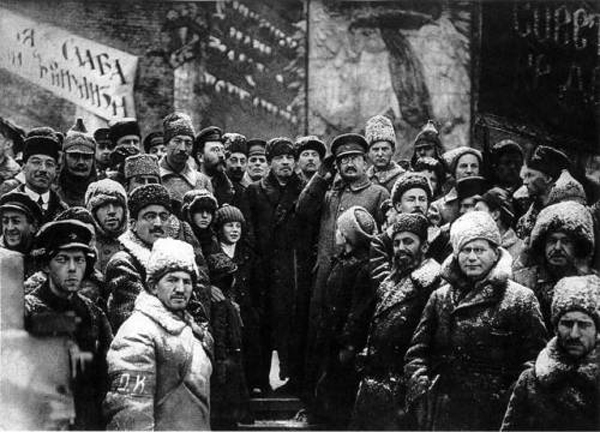Ecehan Balta
The Eastern Anatolian Fault line ruptured along its length. There were two earthquakes, one of 7.8 and the other of 7.6 magnitude in the Richter scale, and numerous aftershocks of 6 Richter magnitude, affecting many countries including Turkey, Syria, Lebanon, Iraq and Cyprus. So far (February 7), the earthquake has killed over 6,000 people in Turkey, 1,500 in Syria and injured over 20,000 in Turkey. The earthquake directly affected 10 provinces and a total population of 15 million in Turkey. The number of people under the rubble is unknown, but it is not difficult to estimate that the death toll will be several times higher. Not only villages or small towns, but even some city centers in the region have not received aid 24 hours after the earthquake hit. People are doing rescue work in the rubble with their own means and trying to reach their relatives.
Not a Natural Disaster
The occurrence of two earthquakes of such magnitude one after another is scientifically rare, a phenomenon that will be studied in the years to come. Yet, at least one of these earthquakes, the Eastern Anatolia earthquake, was already expected by seismologists, especially over the last two years. Despite this predictions, no measure was taken. The rotten buildings built on this fault line, these are the ones that killed people and not the earthquake itself. Buildings that collapsed like paper, dams and mines on fault lines have turned into elements that both killed people and prevented aid from reaching them.
We are facing a situation where more than 50 percent of some cities have been destroyed and public buildings, hospitals and even buildings used by search and rescue teams have also collapsed. In Turkey, a paradise for construction conglomerates, we have seen that rescue supplies are not that abundant and access to them is very difficult. Rescue teams are also having difficulty reaching the areas because the roads are blocked by cave-ins and traffic accidents caused by the earthquake. The temperatures, which have reached minus degrees Celsius in some places, are also making life hell for millions of people outside without tents or food, and tens of thousands under the rubble, who are facing the risk of freezing. The whole country is mobilized to send aid by planes and trucks, and NGOs are working on this. In all cities, people have formed long queues in front of Blood Centers, trying to help the region in one way or another. However, these spontaneous and unplanned offers for aid need to be coordinated to be effective.
There is a Central Planning Authority but no central planning
Turkey was hit by a big earthquake in 1999, which killed nearly 20,000 people according to official figures. After that earthquake, AFAD (Disaster and Emergency Management Presidency) was established to coordinate work in disasters. A type of tax, which is still being collected, was invented and it was said that it would be used to increase earthquake resilience. The recent earthquakes proved that there is no central planning and that this tax has not been used to increase the resilience of cities in Turkey, a country in an earthquake-prone area.
Urgent needs
Urgent needs are being identified and constantly updated, both through AFAD and the organizations that have been able to go to the region. It is clear that the most urgent need right now is for experienced search and rescue teams and equipment. At the same time, tents, heating devices, blankets, sleeping bags and mats are needed to keep people from freezing in the increasing cold. Clean water and dry food are also a priority. Moreover, there is an urgent need for equipment such as generators and power banks to facilitate both search and rescue operations.
So far, the presence of neither AFAD nor other state institutions has been felt in the region. No matter which person you talk to, the first thing they say is that they have been left alone.
The state must declare a full mobilization of all its resources. It is urgent and imperative that the army, which boasts of being NATO’s second largest, be directed to search and rescue operations. Roads blocked by both snow and traffic accidents need to be opened. The Red Crescent needs to set up tent cities without waiting another night.
A different approach is needed
In the short term, making people safe is the first task. But in addition to that, there is much more that needs to be done for cities that will practically not be the same places for the next few years. To heal the trauma in consciousness will even require more time. These cities will certainly experience massive waves of migration, as their health, education and employment infrastructure has been largely eroded. Some may think that it is maybe too early to talk about these things. But if we don’t say these things now, it is possible that before the elections in May the only thing that will happen is that the construction contracts will be given to AKP supporters.
We demand:
- All hotels, public buildings and other relevant places in the region should be tested for durability and opened for shelter,
- The reconstruction of the region should not be handed over to the vultures of the private construction sector, but should be based on earthquake resilience, in line with appropriate urban plans to be prepared by scientists and committees of local people and workers unions,
- Provide a decent benefit on which they can live to all those affected by the earthquake for a certain period of time,
- State provision of housing for all, tenants or not, who lose their homes,
- Granting the right to employment as a public servant to one of the first-degree relatives of deceased public servants,
- Providing all public and later privatized services such as water, electricity, natural gas, transportation free of charge for a certain period of time in the provinces of the region,
- All health services, including those not covered by insurance (dental, psychological services, etc.) to be free of charge for a certain period of time,
- All these expenditures should be made from the earthquake and special consumption taxes collected since the 1999 earthquake, which are currently unknown. These taxes should be taken out of whoever’s pockets they are in. The construction giants and the banks that support them should also be taxed heavily.
We are very angry and sad. We will not forget what this system that willingly takes people to their deaths and keeps the rest of them staring at the rubble has done to us. We owe it to ourselves to destroy it.













